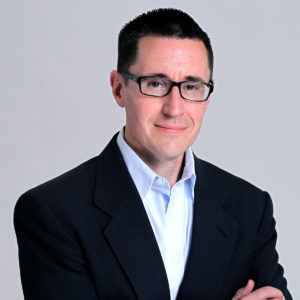High Impact Tips for 401(k) Plan Sponsors: Get your participants ENERGIZED about savings!

I have been accused of being addicted to coffee. While my modest two-cup-a-day intake makes this largely undeserved in my opinion, I acknowledge that I pack a “boy scouts camping trip coffee emergency kit” with my gear for when someone forgets to pack the stove-top percolator or some other crucial input into my personal morning happiness.
What in the world does this have to do with retirement savings? Well, not a whole lot, admittedly. Or maybe it has a lot to do with it, to the tune of $180,000 if you endure my logic through the end of this post!
So let’s look at two fairly easy ways you can help your plan participants get more engaged with their retirement outcomes, and the savings needed to get there.
Get employees thinking about their retirement gaps.
When I first started working with 401(k) plans in the mid-1990s, the prevailing message from the industry as a whole to plan participants was basically twofold. First of all, save a boatload of money from each paycheck. Actually, make that a ****load. And secondly, diversify your investments, even if you have to throw darts at your enrollment form or ask your weird self-proclaimed expert investor brother-in-law his opinion in order to do so. We all just figured the more you could accumulate, the better off you would be in the long term as a plan participant. That is true, to a point. However, little thought was given to what this actually meant in terms of retirement outcomes.
Fortunately, with more and more Americans now within sight of retirement, the conversation has changed. More discussion focuses on things like income replacement, de-accumulation, and whether or not you are likely to outlive your funds in retirement.
A great way to make this concrete for your participants is to help them consider the gap between what they have already saved, and what they are expected to need to retire. At Conrad Siegel, we recently built a very simple, award-winning “Retirement Bridge” web tool that helps participants see where they stand, and then make adjustments to savings rates and retirement age to help close the gap. Other providers have different tools that are designed for a similar purpose. Make sure your participants have access to one!
Help your employees “find” money to save.
All that we say above is not to say that those 1990s DC education goals of maximum savings and adequate diversification are not important. Far from it. In fact, studies repeatedly show that the most important factor in retirement savings success is simply how much you are able to sock away each year. And indeed, the above “gap analysis” discussion may show that your employees should be saving more. Unfortunately, many participants probably could be saving more than they are, and don’t know it.
For example, does your average employee realize that changing his or her “designer coffee” habit can have a huge effect on retirement? So let’s say your daily routine involves cruising through the local caffeinating-hole drive thru for a mega-honkin’-grande artisan double-blended triple-shot quadruple-bypass skinny soy hazelnut peppermint pumpkin cappu-latte in a cup made with recycled non-GMO free-trade paper. With forty-two packets of aspartame. Or something like that. At, say, $3.89 a pop, you can start seeing how the math is going to pan out. That’s $19.45 each work week. That’s close to a thousand dollars spent on coffee in a year; well over a thousand dollars when you realize this is money that has already been taxed. Holy barista.
In our example, to spend $1,000 on coffee, you needed to earn $1,200 in income. Yikes. Instead, brew coffee at home, and put the savings (probably pretty darn close to $1,200) into your 401(k) plan. Maybe get the company match. Suddenly you have, say, $1,800. Invest that $1,800 per year every year for 30 years, and with about 7% in compound interest, changing your habit might accumulate $180,000 in retirement savings.
So that all sounds great to you as the participant, but maybe you can’t be quite that abstemious with your coffee. Fine. Reward yourself for being a good retirement saver by purchasing your pleasingly perplexing coffee concoction only once a month. OK, once a week and maybe just get the “tall.”
Do you see how this works? Point your participants towards tools that help them understand their gaps. Help them find fun ways to uncover retirement savings opportunities. Make a game of it. Enable them to visualize the outcomes using some hard dollars. It can be fun to find new opportunities to save. Or scary to find out just how expensive that daily cup of designer coffee is in future dollars!
Keep following us for some more tips in the weeks to come, and our eventual “101 Tips” ebook! You can always find previous posts and tips on our website!
Check out a summary of previous tips here!

